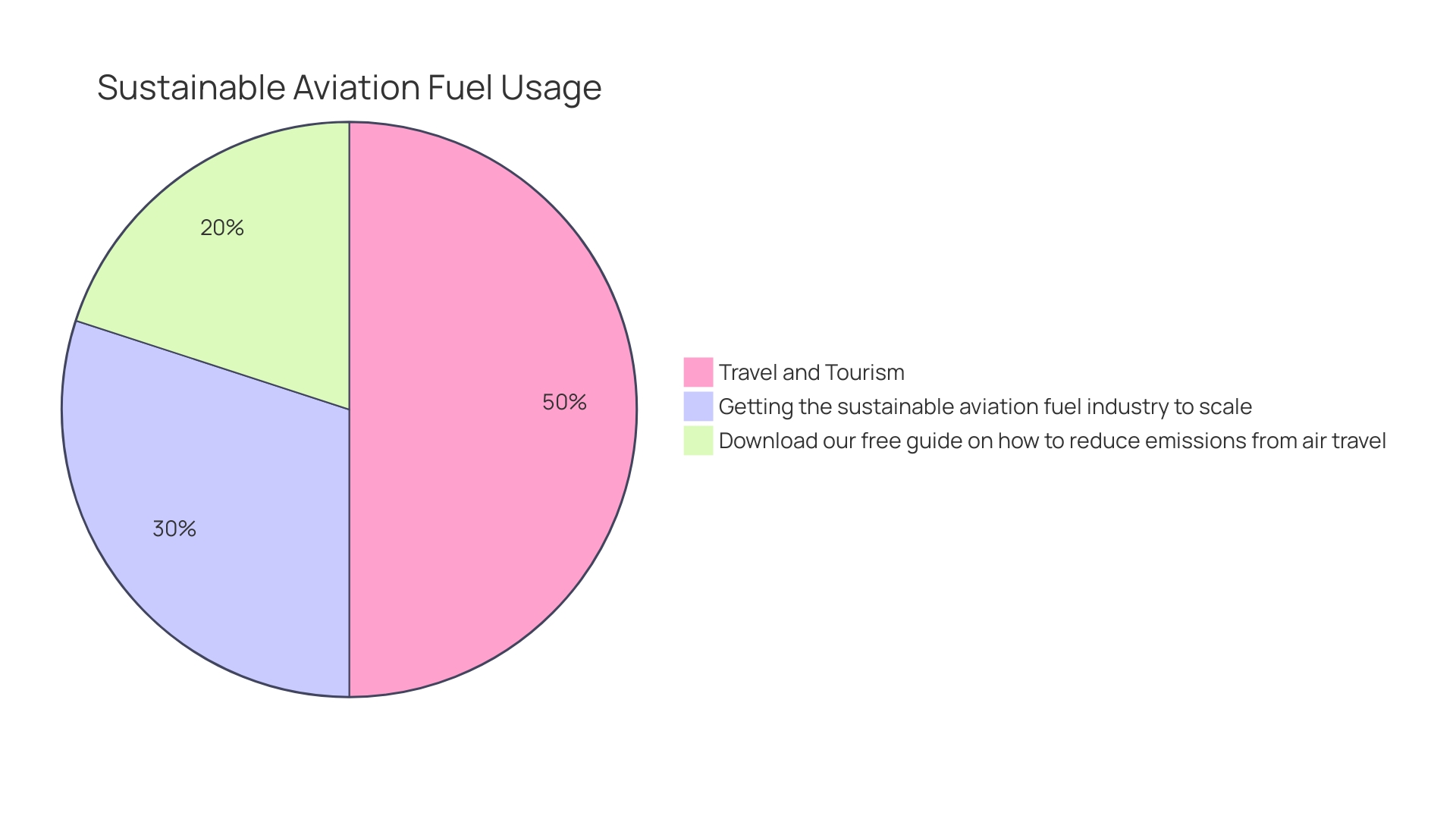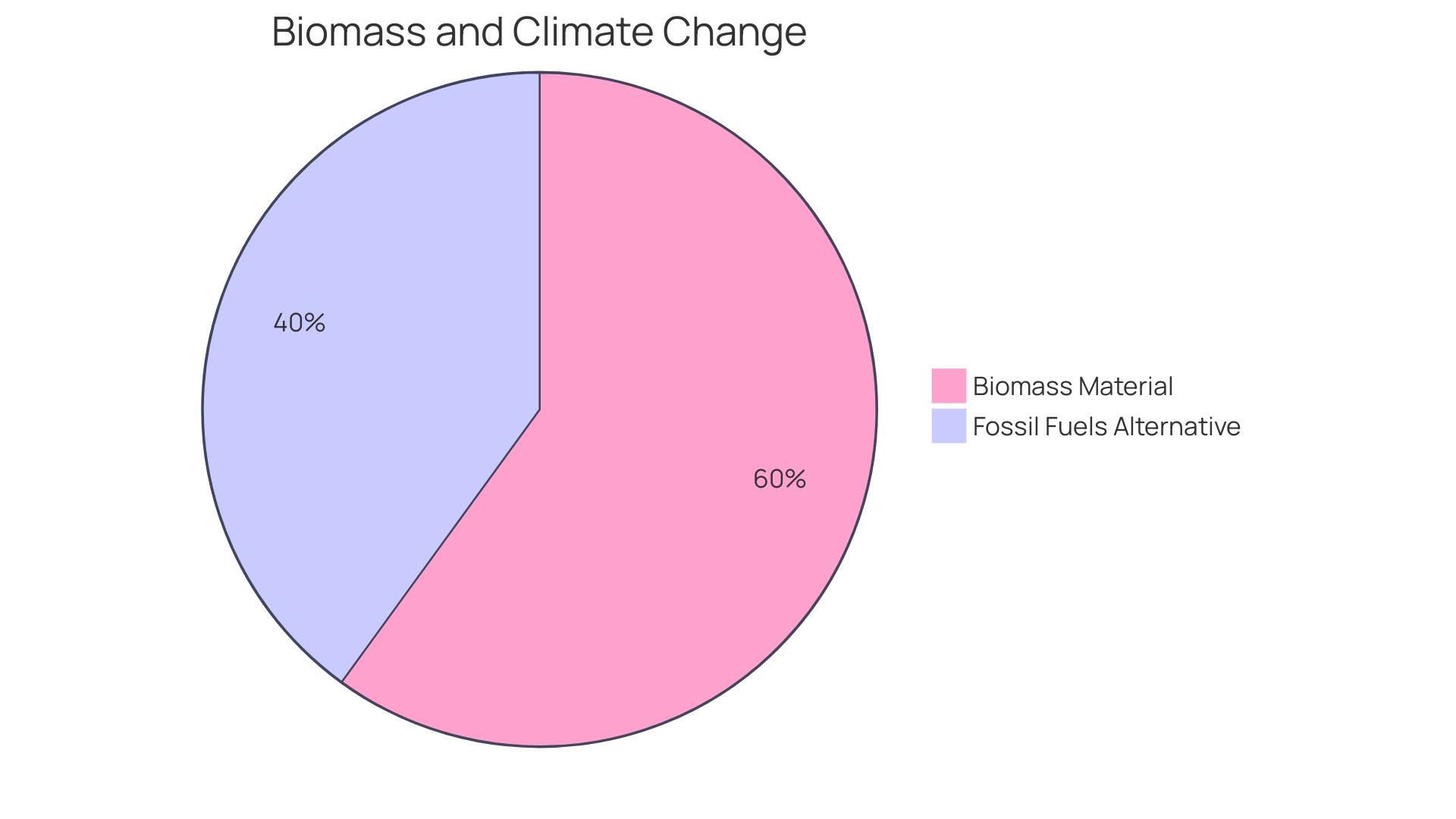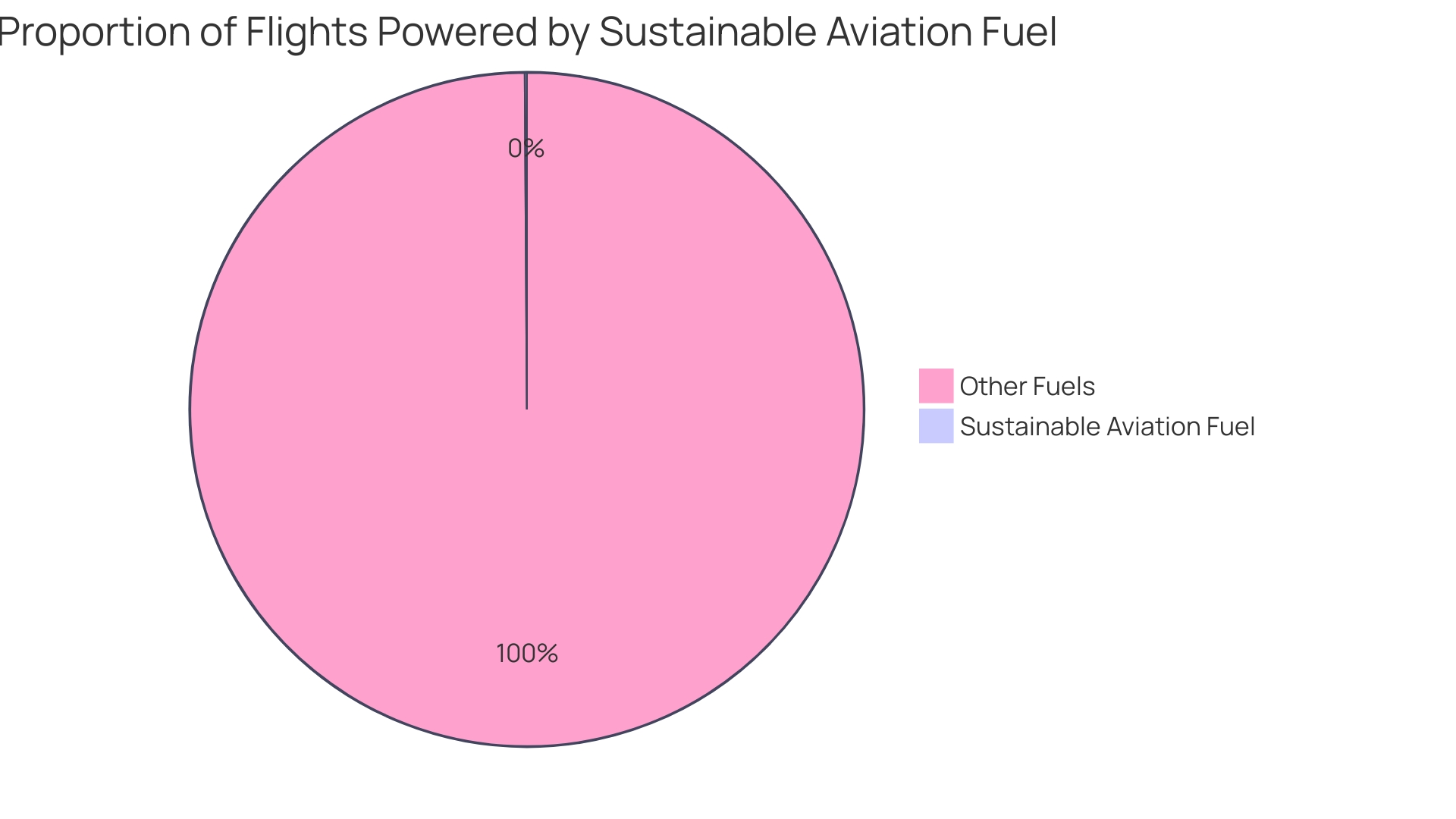Introduction
Sustainable Aviation Fuel (SAF) production is a critical component in reducing the carbon footprint of the aviation industry. However, there are numerous challenges to overcome, including securing cost-effective feedstock and expanding production capacity while ensuring economic viability. Yokogawa, a leader in industrial automation and control, is leveraging digital technologies to optimize production processes and address supply chain efficiencies crucial to SAF scalability.
Recent developments, such as the inauguration of LanzaJet Freedom Pines Fuels' plant in Georgia, highlight the potential of ethanol-to-SAF conversion technology to decarbonize aviation and meet growing demands. With only 0.1% of flights currently powered by SAF, collaboration across sectors and strategic financial and policy instruments are necessary to foster an environment conducive to SAF growth. As the aviation industry seeks to achieve mid-century decarbonization goals, SAF emerges as a promising alternative compatible with existing aircraft engines and capable of curbing additional greenhouse gas emissions.
Current Challenges in SAF Production
Sustainable Aviation Fuel (SAF) production is poised to play a critical role in reducing the aviation industry's carbon footprint. However, the path to large-scale SAF deployment is strewn with challenges such as securing cost-effective feedstock and expanding production capacity, while ensuring economic viability. Yokogawa, a leader in industrial automation and control, with a century of experience, is innovating at the intersection of technology and sustainability to optimize production processes. This involves leveraging digital technologies to enable autonomous operations, thereby addressing production and supply chain efficiencies critical to SAF scalability.
Recent developments, like the inauguration of LanzaJet Freedom Pines Fuels' plant in Georgia, mark significant strides in ethanol-to-SAF conversion. This pioneering technology not only represents a leap towards decarbonizing aviation but also demonstrates the potential for sustainable feedstock and waste-based solutions to meet growing demands. With only 0.1% of flights currently powered by SAF, the urgency to increase production is underscored by the aviation sector's emissions, which account for about 7% of the US transportation sector's total emissions.
Industry experts emphasize the need for collaboration across sectors and the strategic use of financial and policy instruments to foster an environment conducive to SAF growth. The World Economic Forum highlights the necessity for planes to carry larger volumes of SAF for long-haul flights, projecting the imperative for advancements in SAF technologies. As the aviation industry grapples with the longevity of aircraft and the limitations of current decarbonization strategies, SAF emerges as a promising alternative for mid-century decarbonization efforts, given its compatibility with existing aircraft engines and potential to curb additional greenhouse gas emissions.
Honeywell's New Hydrocracking Technology for SAF
In their pursuit of environmental excellence, Honeywell has emerged as a frontrunner with their state-of-the-art hydrocracking process tailored for Sustainable Aviation Fuel (SAF) production. This groundbreaking technology adeptly processes an array of feedstocks, including plant oils and recycled fats, into premium SAF. The efficiency of Honeywell's hydrocracking method stands out in the industry, delivering higher yields and enhancing fuel properties, a pivotal step towards achieving aviation's carbon neutrality goals.
The aviation sector currently contributes approximately 2% of global energy-related CO2 emissions, a persistent challenge in the industry's decarbonization efforts. Recognizing the limitations of battery and hydrogen-powered alternatives, the International Air Transport Association and other stakeholders endorse SAF as the most workable solution. Honeywell's technology aligns with this view, offering a viable path to integrate SAF into existing frameworks without necessitating extensive overhauls in aircraft design or airport infrastructure.
A significant milestone in the SAF landscape is LanzaJet's inauguration of the world's first ethanol-to-SAF production facility, signaling a collective industry movement towards carbon-neutral flying. With aviation giants like Delta and Air France committing to a 10% SAF usage by 2030, technologies like Honeywell's hydrocracking process are instrumental in meeting these ambitious targets and addressing the aviation's substantial CO2 emissions from conventional jet fuel combustion.
Expanding Feedstock Options with Honeywell's FT Unicracking
The SAF production industry is evolving rapidly with the advent of innovative technologies like FT Unicracking, developed in collaboration with Honeywell. This state-of-the-art process is a game-changer for the production of Sustainable Aviation Fuel (SAF), as it offers a versatile approach to converting various feedstocks, including municipal solid waste and biomass, into high-quality aviation fuel. The ability to utilize a wide array of feedstocks is a significant advancement, as it facilitates waste reduction and supports carbon emission mitigation efforts.
The practical implications of this technology are far-reaching. For instance, LanzaJet's Freedom Pines Fuels facility in Georgia is already capitalizing on this technology, utilizing a variety of sustainable feedstocks to produce SAF that will reduce greenhouse gas emissions by over 70%. This not only showcases the potential for substantial environmental benefits but also emphasizes the ability to create secure, domestic supply chains and generate significant economic activity, including the creation of jobs.
Moreover, the integration of this technology aligns with global energy efficiency goals and the Paris Agreement's emission reduction targets. The transition to SAF production using technologies like FT Unicracking is a concrete step towards achieving net-zero emissions by 2050, a goal underscored by the significant energy consumption from industrial buildings and factories.
The successful deployment of FT Unicracking technology in the SAF production industry exemplifies how innovation can contribute to a more sustainable and efficient future, mirroring the way companies like Ferrero have harnessed technology for emergency safety and accountability. As the industry continues to innovate, the production of SAF will undoubtedly play a vital role in the aviation industry's journey towards net-zero carbon emissions, a milestone celebrated by companies such as Virgin Atlantic and recognized across the sector.

Case Study: DG Fuels' Biofuels Manufacturing Facility in Louisiana
LanzaJet's Freedom Pines Fuels facility in Soperton, Georgia, stands as a trailblazer in the renewable fuels landscape, being the world's first plant to convert ethanol into sustainable aviation fuel (SAF). This landmark development marks a significant advance in the aviation sector's journey towards a more sustainable and decarbonized future. Harnessing cutting-edge technology, the plant is a testament to the scalability of SAF production, utilizing sustainable feedstocks and capitalizing on emerging waste-based solutions under favorable economic conditions.
In the pursuit of environmental excellence, LanzaJet's ethanol-to-SAF process is not just a pioneering endeavor but also a scalable solution that addresses the pressing need for decarbonization in aviation. Educational institutions like Waubonsee Community College have recognized the importance of such innovations, integrating case studies on SAF into their curriculum. Biology students there have explored the life-cycle impacts of SAFs, gaining a robust understanding of the environmental and energy implications through a case study using the Greenhouse Gases, Regulated Emissions, and Energy Use in Technologies (GREET) model.
Experts with extensive experience in the energy and forestry sectors, such as Brian from Enviva and Ric, a renewable energy policy veteran, have highlighted the critical role of SAF in the energy transition. Their expertise underlines the importance of this technology in contributing to a sustainable energy future. According to NREL researchers, life cycle assessments are integral to ensuring that energy technologies are genuinely beneficial. By employing a code-based approach to life cycle assessment, NREL's work, using open-source tools, provides a comprehensive understanding of the environmental impacts of renewable energy technologies, including SAF.
Lake Charles Methanol's focus on establishing a hydrogen economy underscores the broader movement toward clean energy and the decarbonization of industry. Louisiana Economic Development's efforts in attracting significant capital investment exemplify the state's commitment to fostering a vibrant economy through clean energy initiatives. The technological advancements and economic opportunities presented by these developments in SAF production and clean energy are shaping the future of energy, industry, and environmental stewardship.
Other Innovations in SAF Production
In the pursuit of sustainable aviation fuel (SAF) innovation, a multitude of approaches have been researched beyond Honeywell's established technologies. The potential of unconventional feedstocks such as algae, cellulosic biomass, and various waste materials is being explored with growing interest. These resources are known for their lower environmental impact compared to traditional oil crops, which occupy significant agricultural land and contribute substantially to greenhouse gas emissions. The conversion process for these alternative feedstocks into SAF typically involves advanced thermochemical methods like catalytic pyrolysis and gasification. These sophisticated techniques are crucial in transforming the raw materials into high-grade fuel compatible with current aviation requirements.
The potential of algae as a feedstock, in particular, has garnered attention due to its minimal land usage and ability to grow in a range of environments, utilizing sunlight, water, and carbon dioxide to proliferate. Algae's diverse forms, from seaweeds to microalgae, offer a promising alternative to fossil fuels, addressing some of the most pressing environmental concerns. Meanwhile, the utilization of non-food woody biomass—by-products from forestry and agriculture that would otherwise go to waste—presents an appealing solution. This approach not only mitigates CO2 emissions but also sequesters carbon, contributing to a more sustainable production system.
These innovative methods in SAF production are echoed by industry experts and leaders in the energy and environmental sectors. With decades of experience, they emphasize the need for more efficient systems and the crucial role of new biomass production methods that do not compete with agricultural land. Moreover, as the aviation sector continues to seek ways to reduce its carbon footprint, these advancements in SAF production are timely. The US aviation sector alone, a significant source of transportation emissions, is set for growth, making the need for scalable SAF solutions more urgent than ever.
The drive towards SAF is underpinned by collaborative efforts between the aviation and energy industries, as well as public sector stakeholders, to create a supportive environment for the scaling of SAF. It is understood that reaching the desired scale for SAF production is not just a matter of technological innovation but also requires strategic financial and policy support, as outlined in industry reports focusing on regions like Europe, the US, and the Middle East.
Overall, the exploration and adoption of alternative feedstocks and advanced refining techniques represent a transformative step towards a more sustainable aviation industry, with the promise of reducing environmental impacts while fulfilling the growing demand for air travel.

Global Mandates and Policies Driving SAF Adoption
With the aviation sector's commitment to a net-zero carbon emissions target by 2050, there is an intensifying interest in Sustainable Aviation Fuel (SAF) as a pivotal solution to decarbonize air travel. As of now, Saf's contribution to global aviation fuel is less than 0.1 percent, primarily due to its limited availability, fragmented market demand, and higher costs compared to conventional jet fuel. However, SAF stands out for its potential to lower carbon emissions from aircraft by over 80 percent.
Recent developments, such as the Third Conference on Aviation Alternative Fuels (CAAF/3) in Dubai, spotlight the industry's strategic directions to bolster the supply and lower the cost of SAFs. At this summit, the International Civil Aviation Organization (ICAO) underscored the goal of reducing the carbon intensity of aviation fuel by 5% globally by 2030 relative to current fossil fuel benchmarks.
The challenge of decarbonization extends beyond CO2 emissions. The environmental impact of contrail cirrus clouds, which can have a significant warming effect, is now being recognized and studied. Such non-CO2 impacts highlight the complexity of achieving meaningful climate change mitigation in aviation.
In addressing both CO2 and non-CO2 effects, the role of SAF becomes even more critical. Currently available SAF can be blended with traditional jet fuel without necessitating new aircraft designs or engine technologies. As research advances and the sector recovers from COVID-19 disruptions, the focus on reducing emissions through SAF and other innovations is expected to intensify, with collaborative efforts from ICAO, governments, airlines, and the broader industry.
Economic and Technical Barriers to Scaling Up SAF
The burgeoning demand for Sustainable Aviation Fuel (SAF) is met with economic and technical challenges that impede its widespread use. The financial viability of SAF is currently hampered by steep production costs. Additionally, the scarcity of feedstocks—materials used to produce SAF—limits the ability to expand production. Infrastructure development for distributing SAF is also lagging, further complicating the scale-up efforts.
Collaborative action from various sectors is crucial for addressing these obstacles. The aviation and energy industries, along with the public sector, must unite to foster an ecosystem that supports SAF growth. Stakeholders can derive insights from sectors like California's utilities, which have grappled with mitigating catastrophic wildfire risks while balancing economic considerations. Similarly, the SAF industry must navigate uncertainties and develop robust safety and sustainability standards.
With the International Civil Aviation Organization targeting net zero carbon emissions by 2050, the urgency to resolve these barriers is significant. Pioneering efforts and strategic partnerships can leverage financial and policy tools to accelerate the adoption of SAF. As the industry evolves, innovations and technological advancements promise to make sustainable fuel cost-effective and energy-efficient, aligning with the sector's commitment to a safety culture. However, with only 0.1% of flights currently powered by SAF, the journey to decarbonize aviation is complex and demands persistent innovation and policy support.
Future Outlook and Innovations in SAF Technology
Ongoing advancements in the realm of Sustainable Aviation Fuel (SAF) production are setting the stage for a more efficient and sustainable aviation industry. A spotlight on these developments reveals an array of technological breakthroughs poised to enhance SAF production. For instance, improvements in catalysts, reactors, and conversion technologies promise to increase the efficiency and yield of SAF, while minimizing environmental impacts. Additionally, the potential of synthetic biology and genetic engineering is being harnessed to unlock new feedstock opportunities, extending SAF production beyond traditional sources.
In the educational sphere, case studies, such as the one developed by Argonne National Laboratory and piloted in a biology class at Waubonsee Community College, illustrate the multifaceted impact of SAF. This particular study utilized the Greenhouse Gases, Regulated Emissions, and Energy Use in Technologies (GREET) model, allowing students from diverse academic disciplines to engage with the life-cycle impact of SAFs, thereby fostering a broader understanding of its environmental significance.
The pursuit of various research strategies to refine the conversion of crude oil into chemicals is integral to the progression of SAF. Ibrahim A. Abba, a leading scientist in the field, emphasizes the importance of exploring multiple research avenues to provide a plethora of technological solutions tailored to diverse crude types and production scales.
This forward momentum in SAF development is mirrored in the larger aviation industry, as evidenced by Virgin Atlantic's recent accomplishments. The airline, renowned for its innovation, has marked a significant milestone in the journey towards net-zero carbon emissions. Such industry-wide commitments underscore the importance of continuous innovation in fuel technologies.
Global strategies to boost SAF production vary, with the European Union favoring mandates, the United States leaning towards incentives, and Japan employing a mix of both. However, the consensus is that incentives play a pivotal role in fostering innovation. The variety of technological pathways for SAF production, including established methods like Hydro-processed Esters and Fatty Acids (HEFA) and emerging ones like alcohol-to-jet fuel, are contributing to a more diverse and resilient SAF market.
As we consider the trajectory of SAF production, the intersection of policy, technology, and education underscores a collective effort to overcome challenges and capitalize on the opportunities that lie ahead. The evolution of SAF production technologies continues to be a beacon of hope for an aviation industry committed to sustainability and reduced carbon footprints.

Conclusion
In conclusion, the production of Sustainable Aviation Fuel (SAF) is critical for reducing the aviation industry's carbon footprint. Challenges such as securing cost-effective feedstock and expanding production capacity must be overcome. Yokogawa is leveraging digital technologies to optimize production processes and address supply chain efficiencies crucial for SAF scalability.
Recent developments, like LanzaJet's ethanol-to-SAF plant in Georgia, highlight the potential of conversion technology to decarbonize aviation. Collaboration across sectors and the strategic use of financial and policy instruments are necessary for SAF growth.
Honeywell's hydrocracking technology offers a viable solution for integrating SAF into existing frameworks without extensive changes. Utilizing various feedstocks with FT Unicracking technology reduces emissions and creates secure, domestic supply chains.
Exploration of alternative feedstocks, such as algae and non-food woody biomass, represents a transformative step towards a sustainable aviation industry. Global mandates and policies drive the adoption of SAF to decarbonize air travel.
Economic and technical barriers, including production costs and infrastructure development, hinder widespread SAF use. Collaborative action is crucial to address these obstacles and create an ecosystem supporting SAF growth.
Advancements in SAF technology, such as improved catalysts and conversion methods, enhance production efficiency. Educational initiatives foster a broader understanding of SAF's environmental significance.
In conclusion, the continued evolution of SAF production technologies, supported by policy and collaboration, paves the way for a more sustainable aviation industry committed to reducing carbon footprints.




